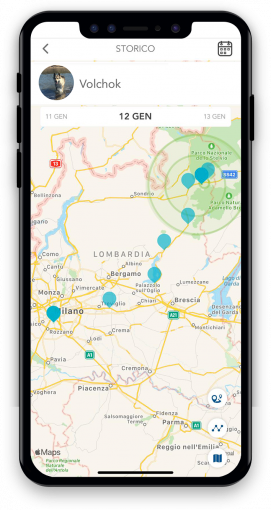Many pet lovers looking for the perfect tracker write to us to find out how much mobile data is used on average by a tracking device. First of all, we have to eliminate a myth: data usage of the GPS is zero because this technology uses a satellite radio frequency receiver, which does not affect the data credit of our mobile phone.
Mobile data is required in a second phase, that is, in the connection between the tracker – which will have already obtained the information related to its position via the GPS signal – and the associated mobile phone or tablet. A sim is integrated in Kippy Evo to send localization to the device, and this needs to be activated with a dedicated data plan. The communication between the two sims, like the communication between two mobile phones, involves the use of mobile data, in the order of less than 5MB per day (if the device is operating).
Which activities have higher data usage?
The Kippy app has to be discussed from a different perspective: it is not possible to predict what the app’s data usage will be, because the latter depends on how much and how it is used. Certainly, there are functions that are more expensive than others from a data consumption point of view. In this sense, another question we often ask is: “how much data does Google Maps use?”. Again, it is difficult to provide an exact estimate, but of course the download of maps is one of the activities that requires the greatest data usage, but always in the order of a few tens of MB, which grow as the quality of the displayed map varies: a standard view is “lighter” to download than a satellite or hybrid view.
What should we do with limited data usage?

In the case of plans with limited data, we recommend that you download maps and consult your GPS history when you have a Wi-Fi connection available. In fact, among the many functions available in the Kippy app, there is also the “History”, which allows you to retrace all the movements of your faithful friend in the last 2 months. The GPS history can be displayed with track, single points or heatmaps. The first combines GPS points close in time into a track. The second shows the GPS points numbered in chronological order; clicking on each pin, it will be possible to see the date and time in which this localization took place.
Another trick to hinder data usage is to close the app when it is not being used, to avoid keeping it active in the background. When the latter is opened again, the tracker will automatically synchronize the new information, to promptly update you on the position and movements of your best friend.
